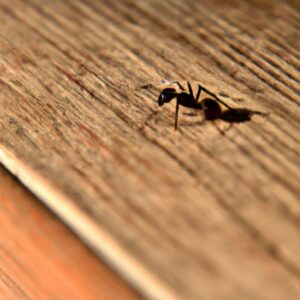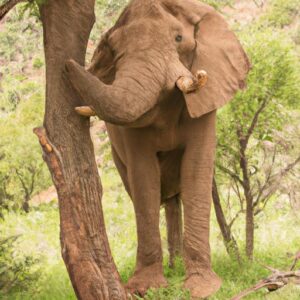Introduction
Lizards, with their scaly skin and darting tongues, have always intrigued us with their unique characteristics and behaviors. These reptiles come in various shapes and sizes, inhabiting diverse ecosystems worldwide. Understanding lizard behavior is not only fascinating but also crucial for conservation efforts and ecological balance.
When we delve into the world of lizards, we uncover a plethora of adaptations and behaviors that have allowed them to thrive in different environments. From their intricate camouflage mechanisms to their impressive locomotion techniques, lizards are truly remarkable creatures that warrant our attention and study. Let’s embark on a journey to uncover the mysteries surrounding these mesmerizing reptiles and answer the intriguing question: can lizards jump?
Can Lizards Jump?
Explanation of Lizards’ Jumping Abilities
Lizards are known for their impressive jumping abilities, which play a crucial role in their survival and hunting strategies. These reptiles have developed powerful hind limbs that enable them to propel themselves off the ground with remarkable agility. By leveraging their muscular bodies and specialized skeletal structures, lizards can execute swift and precise jumps to navigate their surroundings efficiently.
Factors Influencing a Lizard’s Jumping Ability
Several factors influence a lizard’s jumping prowess, including its species, size, and habitat. Larger lizards tend to have stronger muscles and longer limbs, allowing them to achieve greater distances in their jumps. Additionally, environmental factors such as temperature and substrate texture can impact a lizard’s jumping performance. Understanding these variables can provide valuable insights into the evolutionary adaptations of lizards and their unique locomotion strategies.
Comparison of Jumping Capabilities Among Different Lizard Species
Different lizard species exhibit varying degrees of jumping capabilities, depending on their ecological niche and evolutionary history. Some species, like the anole lizard, are renowned for their exceptional jumping skills, using them to escape predators and catch prey. In contrast, other lizards may rely more on sprinting or climbing to navigate their environments. By comparing the jumping abilities of diverse lizard species, we can gain a deeper appreciation for the versatility and adaptability of these fascinating reptiles.
How High Can Lizards Jump?
Maximum Height Achieved by Lizards in the Wild
Lizards exhibit remarkable jumping abilities, allowing them to navigate their surroundings with agility and precision. In the wild, certain lizard species have been observed leaping to impressive heights, showcasing their athleticism and adaptability. From the agile geckos to the acrobatic anoles, these reptiles showcase a diverse range of jumping capabilities that vary across species.
Factors that Determine How High a Lizard Can Jump
The height that a lizard can achieve when jumping is influenced by a variety of factors, including its species, size, muscle strength, and environmental conditions. Larger lizards with powerful leg muscles may be capable of jumping higher distances compared to smaller species. Additionally, factors such as terrain, temperature, and food availability can also impact a lizard’s jumping performance, highlighting the intricate balance between biological and environmental influences on their behavior.
Implications of a Lizard’s Jumping Height in Their Natural Habitat
The ability of lizards to jump to varying heights plays a crucial role in their survival and reproductive success in their natural habitat. From evading predators to securing mates and foraging for food, jumping serves as a vital skill that enables lizards to navigate their surroundings efficiently. By understanding the implications of a lizard’s jumping height, we gain valuable insights into their ecological role and behavioral adaptations in the intricate web of nature.
Do All Lizards Jump?
Overview of Different Modes of Locomotion in Lizards
Lizards exhibit a diverse range of locomotion styles, each suited to their specific habitats and lifestyles. Some lizards are adept climbers, using their strong limbs and claws to navigate trees and rocks with ease. Others are skilled runners, relying on their speed and agility to evade predators. Understanding these different modes of locomotion provides valuable insights into the behavior and ecology of various lizard species.
Lizard Species That are Known for Their Jumping Abilities
While some lizard species excel at jumping, others rely on different forms of locomotion to survive. Certain gecko species, such as the Tokay gecko, are renowned for their exceptional jumping prowess, allowing them to traverse long distances and escape danger swiftly. These jumping lizards possess specialized anatomical features that enable them to execute precise and powerful leaps, showcasing the remarkable diversity of locomotion strategies within the lizard kingdom.
Lizard Species That Do Not Typically Jump
Not all lizards are proficient jumpers, as some species have evolved alternative means of locomotion to suit their environmental niches. For instance, legless lizards, like the California legless lizard, have adapted to burrowing underground rather than relying on jumping. By exploring the varied locomotion tactics employed by different lizard species, we gain a deeper appreciation for the evolutionary adaptations that have shaped their behavior and survival strategies.
Adaptations for Jumping in Lizards
Anatomical Features that Aid in Jumping
Lizards possess a remarkable set of anatomical features that enable them to execute impressive jumps. Their powerful hind limbs, equipped with strong muscles and tendons, serve as the primary propulsive force for their jumps. Additionally, the unique structure of their feet, characterized by specialized scales and claws, provides traction and stability during takeoff and landing. These adaptations work in harmony to facilitate efficient and precise jumping movements in lizards.
Behavioral Strategies Employed by Jumping Lizards
In addition to their physical adaptations, jumping lizards also exhibit specific behavioral strategies that enhance their jumping abilities. Observing these reptiles in their natural habitat reveals a meticulous approach to assessing distances and angles before executing a jump. Some species even display complex courtship displays or territorial behaviors that involve precise jumping maneuvers. These behaviors underscore the importance of cognitive processes in conjunction with physical adaptations for successful jumping in lizards.
Evolutionary Significance of Jumping in Lizards
The ability to jump has played a pivotal role in the evolutionary history of lizards. This dynamic form of locomotion has allowed certain species to evade predators, capture prey, and navigate challenging terrain effectively. The evolution of specialized anatomical structures and behavioral strategies for jumping illustrates the adaptive nature of lizards and highlights the selective pressures that have shaped their diverse jumping capabilities over millions of years. Understanding the evolutionary significance of jumping in lizards provides valuable insights into their ecological roles and survival strategies in changing environments.
Conclusion
In conclusion, the question of whether lizards can jump unveils a captivating aspect of their behavior and abilities. Through exploring the jumping capabilities of various lizard species, we gain valuable insights into their evolutionary adaptations and survival strategies. By understanding how high lizards can jump and the factors influencing their jumping abilities, we not only appreciate their agility but also recognize the importance of preserving their habitats.
As we continue to unravel the mysteries of the natural world, studying lizard behavior remains a compelling avenue for research and conservation efforts. The next time you encounter a lizard basking in the sun or darting across your path, take a moment to marvel at their innate abilities, including their remarkable jumping prowess. Let’s strive to protect these fascinating creatures and the ecosystems they inhabit, ensuring a harmonious coexistence with the diverse wildlife that enriches our planet.




